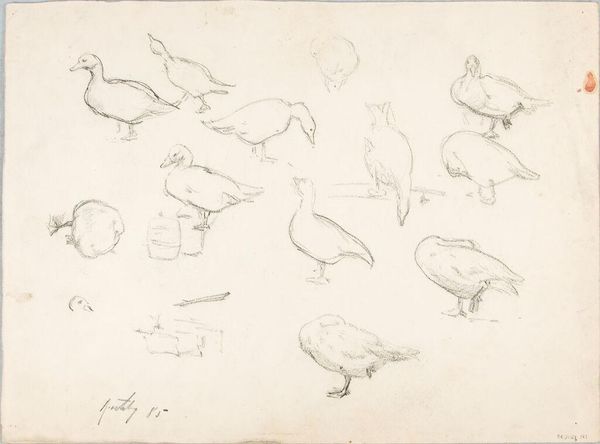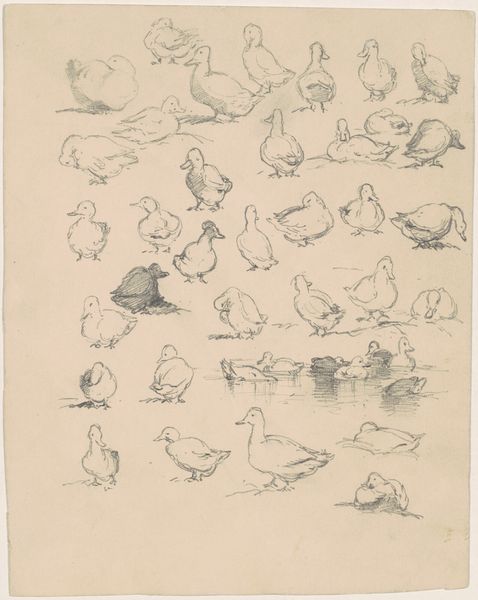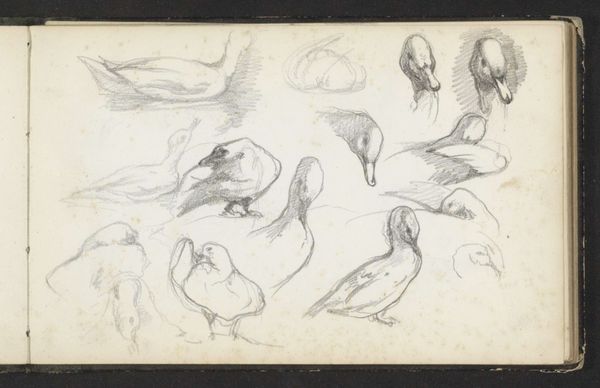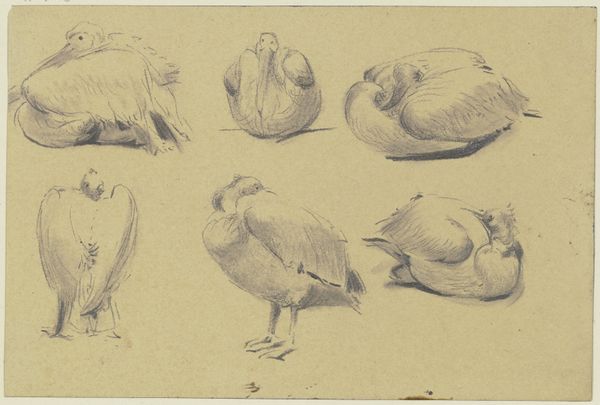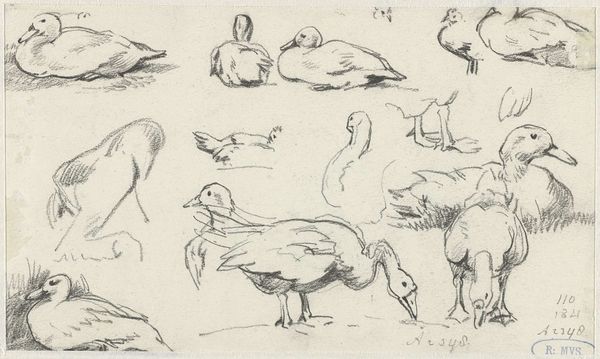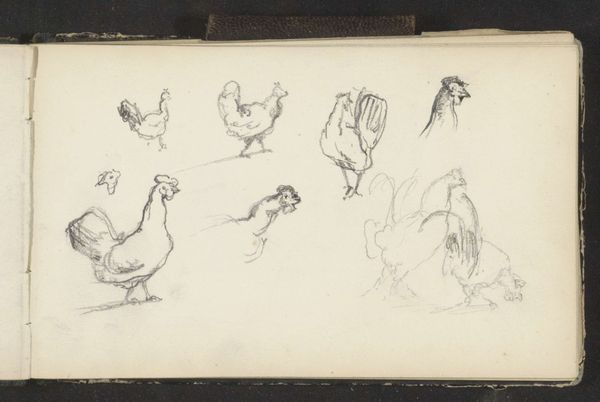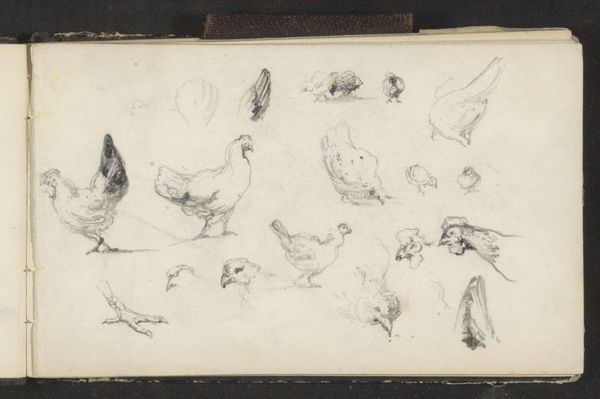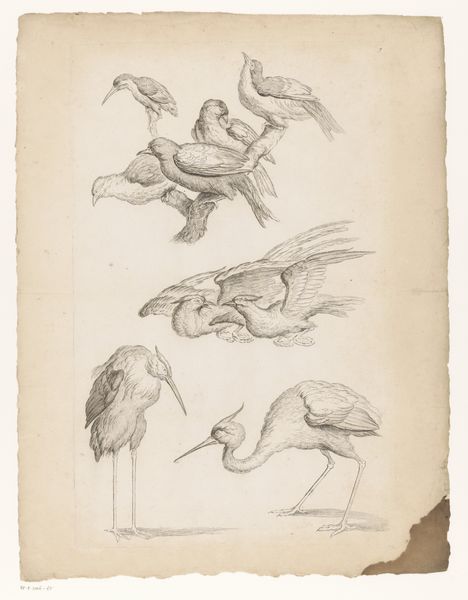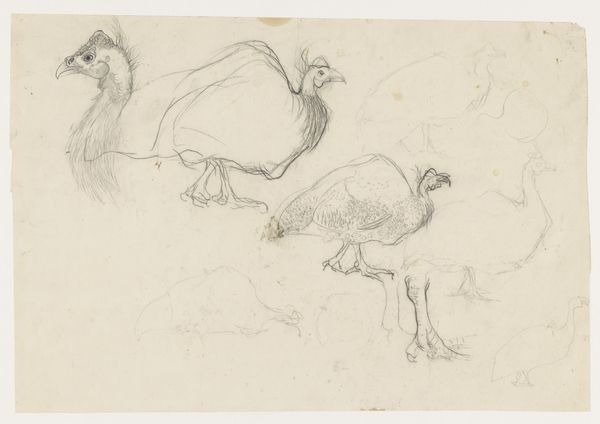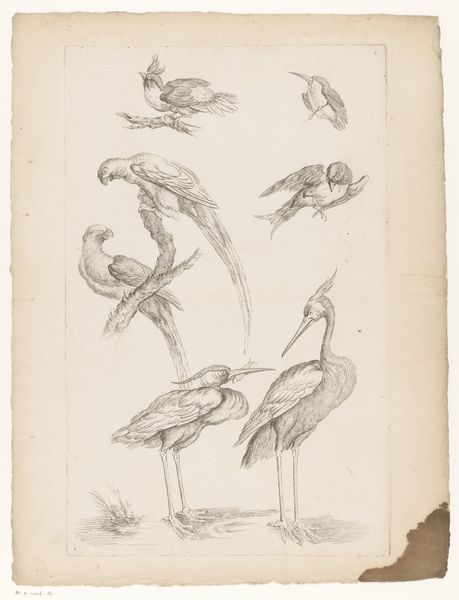
drawing, paper, pencil
#
drawing
#
imaginative character sketch
#
toned paper
#
light pencil work
#
dutch-golden-age
#
pencil sketch
#
dog
#
paper
#
personal sketchbook
#
ink drawing experimentation
#
pencil
#
sketchbook drawing
#
pencil work
#
watercolour illustration
#
genre-painting
#
sketchbook art
#
realism
Dimensions: height 245 mm, width 318 mm
Copyright: Rijks Museum: Open Domain
Johannes Tavenraat’s “Studies van een hond en kalkoenen” is a pencil drawing held in the Rijksmuseum. As an art historian I'm interested in how Dutch art institutions like the Rijksakademie in Amsterdam, where Tavenraat taught, shaped artistic training. Drawings like this were part of an academic tradition, providing artists with a foundation in anatomy and form. Animal studies were not merely technical exercises, though. In the 19th century, the rise of the middle class led to an increased interest in rural life. Animals like dogs and turkeys held symbolic value, representing either loyalty, or, as domestic animals, rural prosperity. These depictions served to reinforce social norms and values associated with the Dutch bourgeoisie. To fully understand this drawing, we might consult historical records, examining the Rijksakademie's curriculum, or explore the changing social attitudes towards animals in the Netherlands. This would allow us to gain insights into the role art played in shaping the cultural landscape of the time. Ultimately, art’s meaning is always tied to its social and institutional context.
Comments
No comments
Be the first to comment and join the conversation on the ultimate creative platform.
